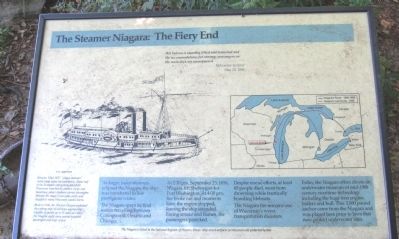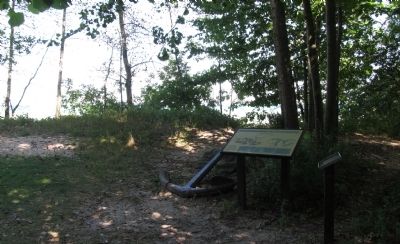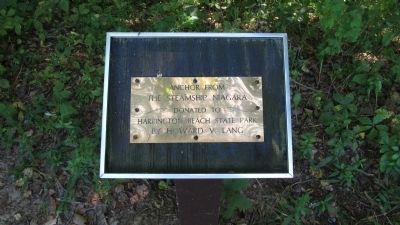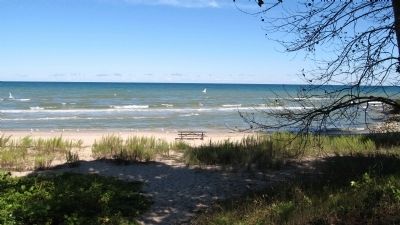Near Belgium in Ozaukee County, Wisconsin — The American Midwest (Great Lakes)
The Steamer Niagara: The Fiery End
Her Saloon is superbly fitted and furnished and the accommodations for steerage passengers on the main deck are unsurpassed.
Milwaukee Sentinel
May 20, 1846
Between 1844-1857, “palace steamers” ruled Great Lakes transportation. About half of European immigrants bound for Wisconsin travelled by steamer. Large and luxurious, palace steamers carried passengers between major Great Lakes ports, and stopped at many Wisconsin coastal towns.
Built in 1846, the 245-foot Niagara embodied the cutting edge of maritime engineering. Capable of speeds up to 15 miles per hour, the Niagara could carry several hundred passengers and large cargos.
As larger, faster steamers eclipsed the Niagara, the ship was transferred to less prestigious routes.
The Niagrara spent its final season travelling between Collingwood, Ontario and Chicago.
At 2:30 pm, September 23, 1856, Niagara left Sheboygan for Port Washington. At 4:00 pm, fire broke out and moments later, the engine stopped, leaving the ship stranded. Facing smoke and flames, the passengers panicked.
Despite rescue efforts, at least 60 people died, most from drowning while frantically boarding lifeboats.
The Niagara fire remains one of Wisconsin’s worst transportation disasters.
Today, the Niagara offers divers an underwater museum of mid-19th century maritime technology including the huge iron engine, boilers and hull. This 3,000 pound anchor came from the Niagara and was placed here prior to laws that now protect underwater sites.
The Niagara is listed in the National Register of Historic Places. Ship wreck artifacts in Wisconsin are protected by law.
Topics. This historical marker is listed in this topic list: Waterways & Vessels. A significant historical date for this entry is May 20, 1846.
Location. 43° 29.585′ N, 87° 47.527′ W. Marker is near Belgium, Wisconsin, in Ozaukee County. Marker is located within Harrington Beach State Park, at the beach. The state park is a fee area. Touch for map. Marker is at or near this postal address: 531 County Road D, Belgium WI 53004, United States of America. Touch for directions.
Other nearby markers. At least 8 other markers are within walking distance of this marker. Water Transport (within shouting distance of this marker); The Krier House (about 300 feet away, measured in a direct line); About the Quarry and the Limestone (about 400 feet away); Fire! Fire! Fire! (about 400 feet away); Destination and Uses of the Limestone (about 500 feet away); Stone Crusher (about 500 feet away); Stonehaven Housing (about 500 feet away); Play Ball (about 600 feet away). Touch for a list and map of all markers in Belgium.
Related marker. Click here for another marker that is related to this marker.
Additional keywords. Shipwrecks
Credits. This page was last revised on August 5, 2021. It was originally submitted on September 7, 2011, by Paul Fehrenbach of Germantown, Wisconsin. This page has been viewed 782 times since then and 30 times this year. Last updated on September 12, 2011, by Paul Fehrenbach of Germantown, Wisconsin. Photos: 1, 2, 3, 4. submitted on September 7, 2011, by Paul Fehrenbach of Germantown, Wisconsin. • Bernard Fisher was the editor who published this page.



